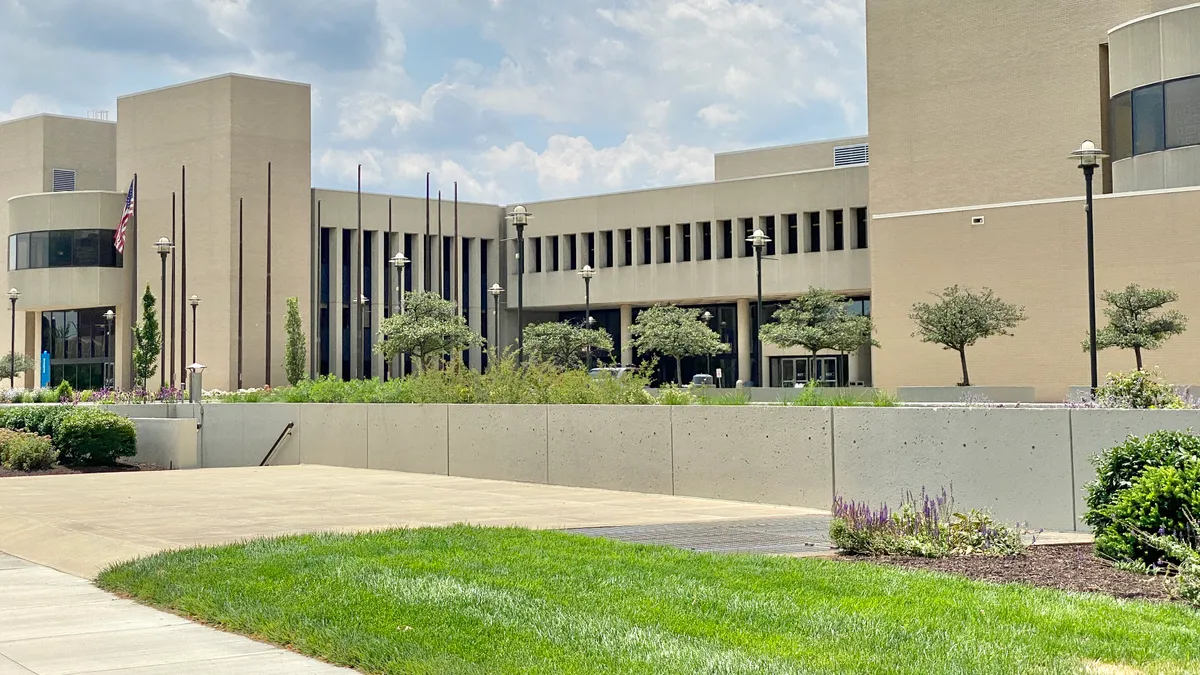Dive Brief:
- Sinclair Community College in Ohio plans to close two of its locations at the end of the spring semester, according to Catherine Peterson, the institution’s chief of public information.
- The college said its learning centers in Englewood and Huber Heights will shutter as enrollment declines and more students as more students look to online programs or dual enrollment programs in their high schools, Peterson said. Sinclair will continue to have locations in Dayton, Centerville, Mason and the Wright-Patt Air Force Base.
- Opened in the mid-aughts, the two locations collectively enrolled 5,500 students each year at their peak. But during the current semester, the locations hosted just one class between them.
Dive Insight:
Sinclair touts its affordability, wide range of programs and small class sizes. But like many community colleges, it faces declining enrollment and financial pressures.
In their 2020 book “The College Stress Test,” a handful of higher education researchers placed community colleges among the groups of institutions most likely to face financial pressures and outright distress in the coming years amid demographic shifts. They noted that these institutions had experienced declining enrollment since 2010.
That said, first-year enrollment grew 2.3% at community colleges in the fall 2023 term after growing the previous year as well, according to the National Student Clearinghouse Research Center.
Originally founded in 1887, Sinclair Community College’s enrollment declined 4.6% to 17,591 students between fall 2017 and fall 2022.
When Sinclair opened the Huber Heights and Englewood locations, the local communities had a strong need for reskilling adults amid the Great Recession and auto plant closures.
“They were so critical for their time,” Peterson said.
Now, with enrollments down and Sinclair looking to be efficient with its resources, the “responsible decision is to close those down,” Peterson said, adding that the college is “doing what the community is showing us they need.”
Some research has found that hybrid funding models — which combine performance-based incentives with funding based on past allocations — can increase enrollment at community colleges among Asian, Black and White students.
But in Ohio, lawmakers’ priorities are shifting away from community colleges.
State higher education spending is skewed toward bachelor’s degrees, according to a 2023 presentation by the Ohio Association of Community Colleges. Community colleges’ share of new spending is projected to decline from 28% in fiscal 2025 to 10% in fiscal 2027. Meanwhile, universities' allocation will rise from 72% to 90%.
Ohio community colleges’ total share of state instructional spending — $507 million for fiscal 2025 — was roughly $1.2 billion less than that of universities.
While it retrenches at its Englewood and Huber Heights locations, Sinclair has also invested elsewhere. In 2020, it began a $1.2 million expansion of its Mason campus that included a smart manufacturing lab.
Sinclair designed the project to “reinvigorate” high tech manufacturing programs in Ohio’s Warren County.
“This venture strengthens our ability to educate and train more people to meet high-demand workforce needs in sectors throughout southwest Ohio,” Sinclair President Steve Johnson said at the time.













